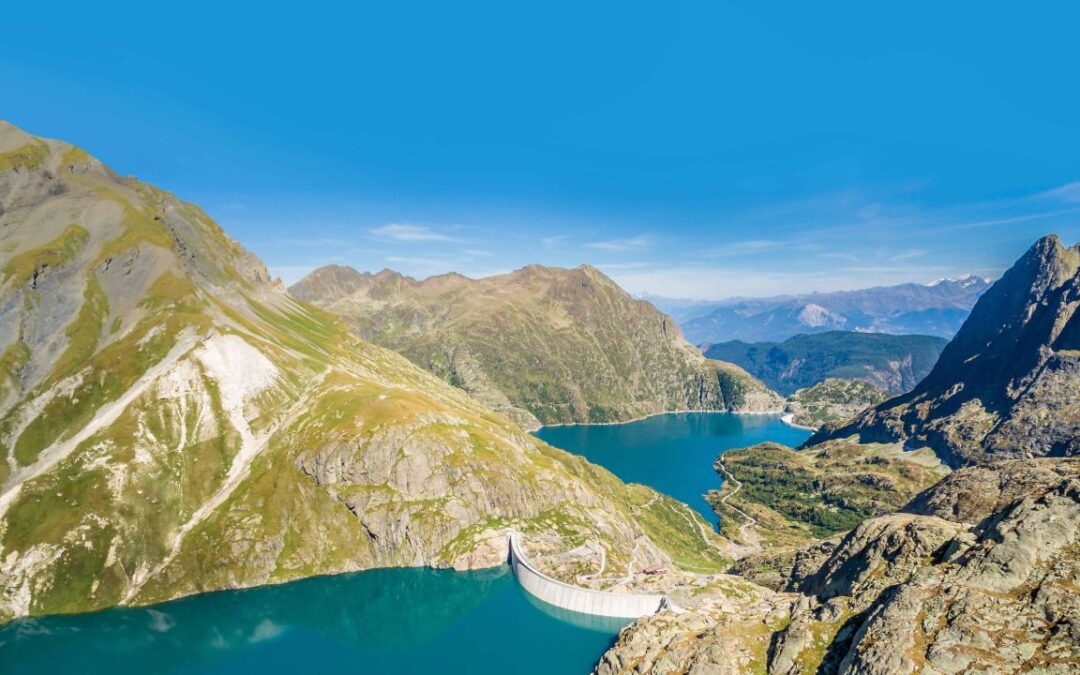There is a gigantic water battery located in the canton of Valais, under the Swiss Alps, called Nant de Drance. It’s a hydropower plant that provides the same energy storage capacity as 400,000 electric car batteries! This renewable energy source could be a game-changer for energy use in Europe.
Beginning operations last month, the water battery, is a pumped storage hydropower plant that is equipped with agile, reversible turbines that offer new levels of flexibility, says Robert Gleitz, a delegate of the board of directors of Nant de Drance. With the flick of a switch, the plant can go from storing energy to providing electricity.
The massive project took 14 years to complete. Around 17 kilometers (10.5 miles) of subterranean tunnels were excavated through the Alps while the six turbines are stored 600 meters (1970 feet) below ground in a giant cavern, the length of two football fields, reported CNN. Nant de Drance repurposed two existing reservoirs, raising the upper one by 21.5 meters (71 feet) to double its capacity. It now holds more water than 6,500 Olympic-sized swimming pools.
“We can take energy (from the grid) when it is too much and generate it again when it’s needed,” says Gleitz. Unlike many of the plants that preceded it, Nant de Drance uses variable speed pump turbines, says Pascal Radue, CEO of GE Renewable Energy Hydro which supplied equipment for the facility.
Nant de Drance returns around 80% of the electricity it takes it back to the grid, and stores around 20 hours of backup energy, says Gleitz.
Historically “open-flow” pumped storage hydropower stations, which are built on river systems and require dam construction, disrupt wildlife and damage ecosystems. In Switzerland, where the first pumped storage hydropower plant was built in 1890, almost half of total river lengths have been artificially altered, with very few Alpine rivers in a natural state.
River Wild: How To Survive Being Swept Away in a Strong Current
“The era of dam building is nearly over,” says Andrew Blakers, an engineering professor at the Australian National University. Blakers adds that these closed loop power plants take up a relatively small space given their energy security. He also estimates that to power a city with one million inhabitants for 24 hours would require around two square kilometers of flooded land, adding that pumped storage hydropower offers one of the highest efficiency energy storage solutions currently available.
Europe is hoping to become the “first climate-neutral continent,” and it has big ambitions for renewable energy. In 2020, just over one-fifth of the continent’s total energy came from renewable sources, but in May this year, the European Commission increased its 2030 renewables target from 40% to 45%.
To achieve this goal, new, high-capacity storage facilities are essential, says Blakers. The European Association for Storage of Energy estimates that the continent will need 200 gigawatts of storage by 2030 – more than four times its current storage capacity. In the decade between 2010 and 2020, just 8 gigawatts of storage was added to the grid.
The Power Grid Is Far More Vulnerable to Cyber Attacks Than Most People Realize
Switzerland’s water battery could offer stability to the highly unstable power grid across the continent, says Rebecca Ellis, energy policy manager at the non-profit International Hydropower Association. Nant de Drance has increased Switzerland’s installed energy capacity by 33%, says Ellis, adding that it “shows the leadership of Switzerland” in the transition to renewables.
This article was originally published at Ready Nutrition™ on August 26th, 2022







